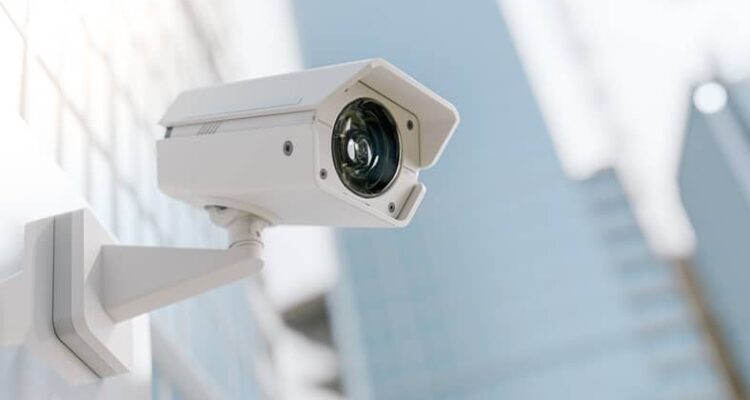We are here to answer the most frequently asked questions (FAQ) about home security systems…

How to Prevent Employee Theft
There may have been a time when employee theft was simply regarded as a cost of doing business. However, in today’s more competitive commercial world, margins are tighter, and your business can’t be passive about the possibility of employees stealing from you.
Employee theft is one of the most serious problems facing small business owners. Here are a couple of alarming statistics.
- 75% of employees have stolen at least once.
- 90% of all significant theft losses originate from employees.
What Are the Different Types of Employee Theft?
Although employee theft can take various forms, the bottom line is that something of value is being taken. Here are five of the most common things employees steal.
Cash
If your business handles cash (e.g., you have a store), theft can occur at the point of sale (POS) or in the counting room. More indirect ways of stealing cash include skimming (diverting business funds), embezzlement, and fraud (e.g., bogus billing, inflated expense reports, check tampering).
Merchandise
Employees may steal products out of the backroom or from warehouse shelves. Merchandise theft and embezzlement of product components and raw materials are major factors in inventory shrinkage.
Keep your storage areas clean and organized. It’s more difficult to prevent employee theft if empty boxes, packaging materials, old merchandise, etc., are strewn everywhere.
Supplies
Many employees don’t give much thought to taking a pen or some sticky notes home. However, office supplies cost money, and a relaxed environment pertaining to their personal use can add up to substantial losses.
Data
In today’s digital world, data can have high value. Data theft may involve stealing business opportunities and misappropriating customer lists or other trade secrets. Employees with access to valuable information should be required to sign non-disclosure agreements (NDAs).
Time
Theft of time is often treated differently from other forms of theft. However, it is still theft and deserves similar consideration. An hourly worker may steal time by clocking in early or clocking out late from their shift, or two employees may clock in for each other (buddy punching). You should invest in a system that eliminates early clock-ins and late clock-outs.
Why Do Employees Steal?
Psychological research points to two answers to this question: the Theft Triangle and the 10-80-10 Rule.
Theft Triangle
The Theft Triangle specifies that three conditions need to be met to enable stealing:
- Opportunity: An employee must see a chance to steal. For example, a glitch in the processes comprising your loss prevention system.
- Motivation (aka Need): An employee is under pressure to pay for a hospital bill or unexpected vehicle repairs.
- Justification: An employee engages in moral rationalization for their theft, e.g., anger at company policies, they feel they are overdue for a raise while helping their manager get rich, or they believe that the business won’t miss a few merchandise items.
Changing motivations and justifications is challenging, but opportunities can be eliminated or significantly reduced with an effective business security system.
10-80-10 Rule
The 10-80-10 Rule distributes employees between three groups:
- 10% are intent on engaging in theft.
- 80% would steal if presented with opportunity, motivation, and justification (Theft Triangle).
- 10% will never steal.
Establish a hiring process to try to screen out the first 10%, while proper security measures described below will help keep the 80% honest. Following a strict hiring process can be problematic during a labor shortage. However, whenever possible, reference and background checks should be performed.
Ways You Can Prevent Employee Theft
Establish a Bulletproof Cash Handling Procedure
The cash you take in needs to proceed safely to your safe and then to your bank account. Don’t assume your process is secure because you’ve never had cash stolen. Spend time educating yourself on best practices for cash handling.
Invest in a Modern Point of Sale (POS) System
A POS needs to do more than just check out customers. A modern system collects data to help you find anomalous transactions (e.g., fraudulent voids or discount abuse). A POS can also serve as a time clock to help uncover time theft.
Track All Transactions
With a top-quality POS, every transaction can be tracked, providing insights into much more than loss prevention. For instance, you can identify employees who underperform in sales and those worthy of recognition for beating sales goals.
Monitor Your Inventory Closely
With respect to inventory management, you need to consider three main time periods.
- Inventory entering: All merchandise must be checked against the shipping manifest. If this is not done, it provides an opportunity for theft by a member of your warehouse staff or a delivery person.
- Inventory inside your facility: Carefully monitor your inventory with surveillance cameras, video alarms, and surprise audits.
- Inventory leaving: Shoplifting can take many forms, including changing the price tag to pay a lower price. Employees should be trained to carefully check to ensure that a scanned item matches the description in the POS. However, be aware that deliberately paying a lower price may involve collaboration with an employee.
An electronic article surveillance (EAS) system can help prevent items leaving the store without being purchased.
Create an Employee Theft Policy and Stick to It!
Your employee theft policy should define all the kinds of employee theft and the consequences if an employee engages in it. Communicate the policy to your entire staff at regular intervals to remind them that you take theft seriously.
Be Aware of Employee Behavior
Guilt and fear of being found out are likely to weigh heavily on an employee who engages in theft and may lead to behavior changes, including the following.
- Sudden, apparent devotion to working late.
- A lifestyle well above the employee’s salary level.
High-loss cases often involve an employee repeatedly diverting small sums of money over time, making the theft extremely difficult to detect.
The Importance of a Complete Video Surveillance System (VSS)
Effective surveillance is essential to ensure employees aren’t acting dishonorably and to catch any suspicious activity. Most businesses utilize some form of video surveillance, but you need an adaptive VSS to provide the right data when you need it.
Make sure your garbage dumpsters have video coverage. You might not know it, but dumpsters are a common route for thieves. An employee places stolen merchandise in a garbage bag. A second garbage bag filled with trash is placed on top. The garbage goes in the dumpster, while the bag filled with the stolen items is left nearby to be collected later.
Why You Need US Protective Services
We offer commercial security systems with comprehensive monitoring to help you reduce or even prevent employee theft. Built-in video analytics means our cameras do more than just record—they help detect and deter potential loss incidents.
Unfortunately, employee theft is incredibly common, but by taking proactive steps, you can reduce your rates of theft substantially. Contact US Protective Services today for more information!



